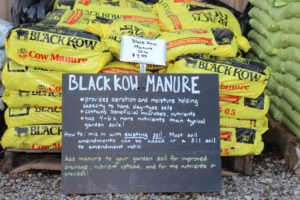
Helping Customers Control Insects
When it comes to choosing pesticides to fill your shelves, you have many options. You also have many types of customers for whom you stock the appropriate products.
For the unconfident, new gardener to the DIY gardener that will try doing everything else before spraying, or the generally eco-conscious gardener, you may want to consider recommending a minimum risk pesticide.
Conventional Pesticides Versus Minimum Risk Pesticides
A pesticide is any substance or mixture of substances intended for preventing, destroying, repelling or mitigating any pest and will make claims of this on the label and advertising.
Any substance falling within this definition of a pesticide must be registered by the Environmental Protection Agency (EPA) before it can be legally sold or distributed in the United States.
Section 25(b) of the Federal Insecticide, Fungicide and Rodenticide Act (FIFRA) has determined a minimum risk pesticide does not require EPA registration because it poses little to no risk to human health or the environment.
Individual states may still require registration of minimum risk pesticides.
Many pesticides, if used improperly, can have unintended consequences like harming the plant they were applied to protect or harming beneficial insects and organisms.
Minimum risk pesticides are made from natural ingredients that have proven over time to defend against insects and disease, making them an effective option for prevention and control that is non-toxic and reduces the risks of human error.
Minimum risk pesticides are usually a solution of botanical oils from herbs such as rosemary and thyme which work on contact by smothering and dehydrating insects and disease spores while providing a barrier preventing pest establishment.
Considerations When Selecting a Minimum Risk Pesticide
With any product recommendation, it is always beneficial to ask some qualifying questions before putting your reputation on the line.
What type of plants and where are they spraying? What are the problems? What have they already done to try to fix it? Below are some additional things to know.
It is important to remember that these products are still pesticides and though their ingredients are naturally occurring, it does not mean all of them are suitable for consumption.
Not all minimum risk pesticides are allowed for use on food crops. EPA regulations are very specific on which products are allowed and which are not.
A product label should clearly list specific insects, diseases and the crops they can be applied on. Terms like organic and no re-entry time do not necessarily mean safe for food.
Ingredients Approved for Use on Food:
Castor oil (U.S.P. or equivalent), cinnamon and cinnamon oil, citric acid, cloves and clove oil, corn gluten meal, corn oil, cottonseed oil, garlic and garlic oil, geraniol, mint and mint
oil, peppermint and peppermint oil, potassium sorbate, putrescent whole egg solids, rosemary and rosemary oil, sesame (includes ground sesame plant) and sesame oil, sodium chloride (common salt), soybean oil, thyme and thyme oil, white pepper
Ingredients Not Approved for Use on Food:
Cedar oil, citronella and citronella oil, dried blood, eugenol, geranium oil, lauryl sulfate, lemongrass oil, linseed oil, malic acid, 2-phenethyl propionate, sodium lauryl sulfate, zinc metal strips
Some of the active ingredients may have some unwanted side effects like a strong smell such as garlic or be attractive to animals like dried blood. If your customer is going to be entertaining that day or has pets, you may want to offer another solution.
Minimum risk pesticides may require some customer education so they are prepared for potential outcomes.
These low risk products are not likely going to offer a one-and-done solution.
A product may be a knockdown insecticide, but that doesn’t mean it provides a lasting residual to protect against the insects that did not make contact with the solution, areas of a leaf that were missed or new plant growth.
Most natural products work best when used preventively and often. Check the labels to recommend the appropriate use frequency.
Minimum risk pesticides do not mean low cost pesticides.
The higher priced item is likely to have more active ingredients, use extracts versus oils, or sourced with organic certified materials.
Also consider what goes into making and supporting each product.
For example, can you find test data to prove efficacy? Has a product been formulated using new techniques or technologies to give it a performance edge?
Your customers may or may not know what they need to control pests, but they often do want an option they can feel good about.
The advantages of minimum risk pesticides are that they help offer non-toxic and easy-to-use solutions that pose less risk of environmental damage.
With a little bit of qualifying you can help your customers succeed.

















 Videos
Videos





